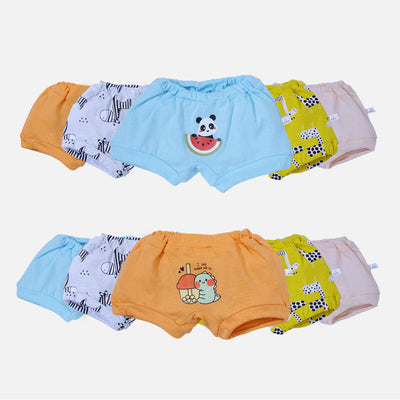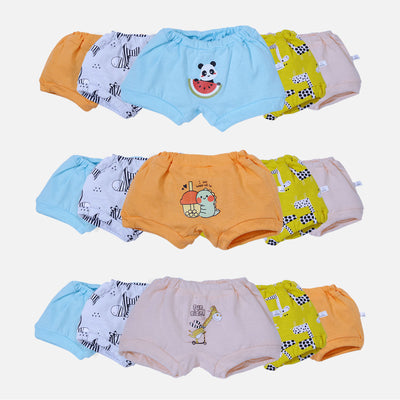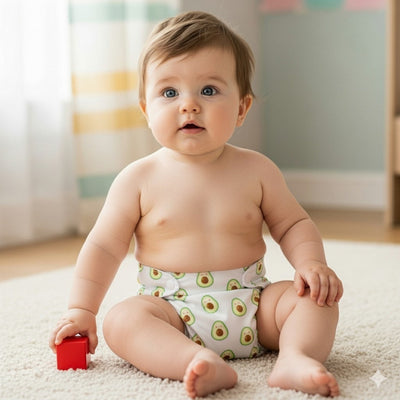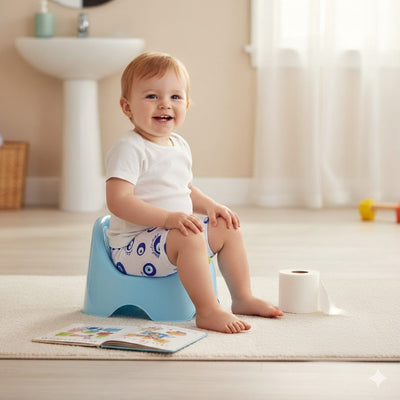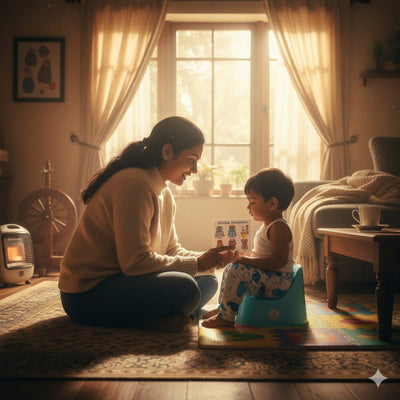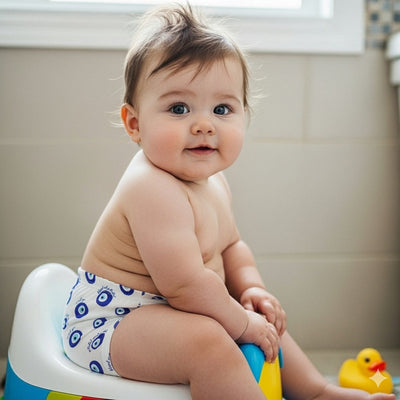How to Handle Accidents Without Shaming: A Guide for Gentle Potty Training
Potty training is a significant milestone in every child’s development, but it can be an emotional rollercoaster for both parents and toddlers. Accidents are part of the learning process; yet, how we react to these minor mishaps plays a significant role in shaping a child’s confidence and self-esteem.
Shaming a child, even unintentionally, can hinder progress, increase resistance, and foster fear or embarrassment around using the toilet. But there's a better way. Here's how you can navigate potty training accidents with empathy and effectiveness without shame, blame, or stress.
Why Accidents Happen During Potty Training
Understanding why accidents occur can help parents respond with more compassion and patience. Some common reasons include:
-
Your child is still learning: Potty training takes time, and toddlers are mastering new physical and emotional skills.
-
They’re too busy playing: Many children get so engrossed in activities that they ignore the urge to go.
-
Unfamiliar environments: Being away from home may cause anxiety or discomfort using unknown toilets.
-
Developmental readiness: Some children aren’t fully ready, even if they show interest.
-
Distractions or stress: Big life changes, like a new sibling or starting preschool, can lead to regressions.
Accidents don’t mean failure; they mean practice is still needed.
Challenges and Solutions for Accident Management
1. Challenge: Reacting with Frustration or Disappointment
Why does it happen:
Potty training can test even the most patient parents. When accidents happen, especially for the third time in a day, it’s natural to feel overwhelmed, disappointed, or even frustrated. You’ve just cleaned up, changed their clothes, and now it’s happening again. Sound familiar?
Why it matters:
How you handle accidents plays a key role in shaping your child’s potty training success. Negative reactions, even subtle ones like a sigh, eye roll, or raised voice, can make your child feel ashamed or anxious. This emotional stress can slow down progress and lead to resistance or regressions.
Solution:
Before reacting, pause and take a breath. Remind yourself that your child is not doing this on purpose; they’re still developing bladder awareness and control. Respond with empathy and understanding. Try saying something like,
“That’s okay, accidents are part of learning. Let’s get you cleaned up and try again next time.”
This approach helps your child feel safe, not judged, and more willing to keep trying. Over time, this builds their confidence and resilience. You can also involve them gently in the cleanup process, handing you clean training pants or helping toss wet clothes in the laundry. This gives them a sense of responsibility without making the accident feel like a punishment.
To make cleanup easier and reduce your own stress, use Snugkins padded underwear or reusable training pants, which absorb minor accidents and are easy to wash. Knowing you have the right gear can help you stay calm and focused on teaching, not just managing messes.
2. Challenge: Frequent Accidents in New Environments
Challenge: Frequent Accidents in New Environments
Why does it happen:
Children thrive on routine and familiarity. When they’re in a new environment like visiting a friend’s house, going to the mall, or starting preschool, they may feel overwhelmed, distracted, or unsure of where and how to use the toilet. Some children are even hesitant to ask to use the bathroom in unfamiliar places, especially if they’re shy or anxious.
Why it matters:
Frequent accidents in public or new settings can be frustrating for parents and embarrassing for toddlers. If not handled gently, it can lead to fear of going out or even regression in potty training progress.
Solution:
Preparation is key. Before heading out, take a few minutes to plan for potential accidents. Always carry a small potty bag with essentials: a full change of clothes, wet wipes, hand sanitizer, and at least one or two pairs of training pants. These cotton training pants are designed to be absorbent enough for minor accidents while still allowing your child to feel the wetness, an important part of the learning process.
If you're visiting a new place, show your child where the bathroom is as soon as you arrive. Use simple and encouraging language like, “Here’s the potty you can use if you need to go!” It gives them a sense of security and empowers them to take charge
Selecting the right gear can make a significant difference. Snugkins training pants offer a comfortable, easy-to-pull-down design that empowers kids to be more independent, even when they’re outside their comfort zone. Their cute, child-friendly designs also help toddlers feel confident and excited to wear them, an underrated but effective motivator during potty training!
3. Challenge: Night-time Accidents
Why does it happen:
Night-time dryness tends to take more time to develop compared to daytime potty training. Even if your child is fully trained during the day, nighttime bladder control can take weeks or even months longer to develop. During sleep, your child may not recognize the urge to go, or their body may not yet be producing enough of the hormone that reduces urine production at night.
Why it matters:
Night-time accidents are common and completely normal, but they can be frustrating for both you and your child, especially when they disrupt sleep and require middle-of-the-night bedding changes. More importantly, children may start to feel ashamed or discouraged if not handled with care.
Solution:
Start by normalising the process. Let your child know that many kids their age still have nighttime accidents and that it's nothing to be embarrassed about. Avoid punishments or even comments that could be perceived as disappointment.
Create a bedtime routine that supports night-time dryness. Encourage your child to use the potty right before bed and consider gently reminding them to go if they wake during the night. Reducing fluid intake about an hour before bedtime can also help, but make sure they’re still getting enough hydration during the day.
Some parents also find it helpful to leave a small light on in the bathroom and use easy-to-remove sleepwear, so if your child wakes up needing to go, they can do so independently.
Remember, nighttime dryness is a process that varies greatly from child to child. Stay consistent, be patient, and celebrate dry nights as progress without making accidents feel like setbacks.
Tips to Handle Accidents with Care
-
Never scold or punish: This can lead to fear and may cause regressions.
-
Focus on progress, not perfection: Celebrate small wins like telling you they need to go, even if they don’t make it in time.
-
Keep potty time positive: Read a book, sing a song, or use a reward chart.
-
Use child-friendly training gear: Choose Snugkins potty training pants, designed for comfort, ease, and encouraging independence.
-
Stick to a routine: Regular potty breaks help build habits and reduce surprises.
Choosing the Right Training Pants Matters
The right gear can reduce accidents and encourage self-confidence. Look for:
-
Absorbency: Padded underwear like Snugkins’ training pants offers just the right level of protection without replacing the feel of real underwear.
-
Comfort: Soft, stretchable waistbands and breathable cotton materials make a difference.
-
Eco-friendly and reusable: Reusable training pants are not only cost-effective but also better for the environment.
Whether it’s cotton training pants for day use or potty training pajamas for nights, Snugkins makes potty training smoother for both toddlers and parents.
Empower Your Child with Support, Not Shame
Potty training can be messy, literally and emotionally. But your calm, encouraging response can turn accidents into learning moments. Rather than focusing on setbacks, focus on how far your child has come. They’re developing important life skills, and your support helps build their confidence. Using child-friendly tools like Snugkins padded underwear can make the journey less stressful, while giving your little one the freedom to learn at their own pace. With patience, love, and the right approach, your child will get there and feel proud doing it.
FAQs on Handling Potty Training Accidents
1. My child had been doing well, but now accidents are happening again. What should I do?
Regression is normal and can be triggered by changes like a new sibling, travel, or starting school. Don’t shame or punish. Return to a gentle routine, offer extra potty reminders, and consider using cotton training pants to support them during this phase. Consistency and reassurance will help them get back on track.
2. Is it normal for potty-trained kids to still have accidents at night?
Yes, night-time dryness can take longer to develop, even months after daytime training is complete. Use potty training pajamas, mattress protectors, and breathable padded underwear for nighttime. Be patient and avoid shaming your child. Their body will learn to stay dry overnight at its own pace.
3. Are padded underwear better than diapers for potty training?
Yes! Padded underwear bridges the gap between diapers and real underwear. They allow your child to feel wetness, encouraging quicker learning, while offering some protection during accidents.





